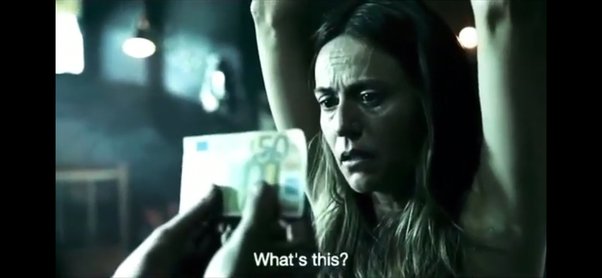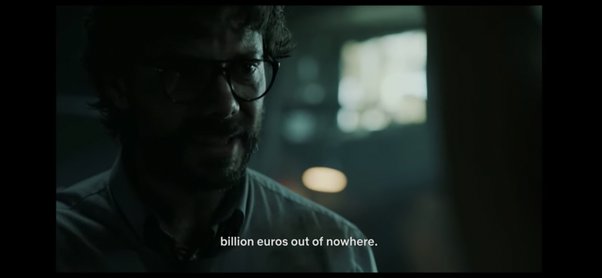Money Heist and the Reality of Modern Finance: Is It Just a Heist or a Lesson in Economics?
Netflix’s Money Heist (La Casa de Papel) is more than just an action-packed crime series—it’s a critique of how modern financial systems work. The show follows The Professor and his gang as they attempt to print billions of euros inside the Royal Mint of Spain and later steal the country’s gold reserves from the Bank of Spain. But beyond the thrilling robberies, the series raises deep questions about the global financial system, especially about how money is created and distributed.
Money from Thin Air? The Professor’s Argument
One of the most striking scenes in Money Heist is when The Professor explains to the police inspector Raquel how central banks create money. He says:
“In 2011, the European Central Bank made 171 billion euros out of nothing […] 185 billion in 2012; 145 billion euros in 2013.”
His point? Governments and banks create money in ways that the average person doesn’t fully understand. The process he is referring to is called quantitative easing (QE). After the 2008 financial crisis, the European Central Bank (ECB) and the U.S. Federal Reserve started pumping money into the economy to prevent financial collapse. But instead of printing physical cash, they digitally created money and used it to buy government bonds and other assets from banks.
The problem, as The Professor sees it, is that this new money didn’t reach ordinary people or small businesses. Instead, banks used it for investments and stock market speculation, increasing the wealth of corporations while wages remained stagnant and debt levels soared.
Printing Money vs. Quantitative Easing
The gang in Money Heist planned to print €2.4 billion and inject it into the economy. But in reality, the ECB has "created" over €3 trillion since the financial crisis. That’s more than 1,000 times what the robbers intended to steal!
However, simply printing money doesn’t always lead to inflation. A famous example of hyperinflation happened in Weimar Germany after World War I. The government printed too much money without increasing production, which caused prices to skyrocket. But in a modern digital economy, central banks don’t print cash—they create digital money, which doesn’t always lead to inflation in the same way.
Fiat Money: Is It Just Paper?
In one memorable scene, The Professor rips up a €50 note and shouts:
“It’s nothing! It’s just paper!”
This highlights the concept of fiat money—currency that has no intrinsic value but is valuable because governments say so. A €50 bill is only worth something because we all agree to trust the financial system. But what if that trust disappears? If people lose confidence in their government or central bank, the value of money can collapse.
The Professor bets on this idea when planning his heist. He knows that if the public loses trust in the Bank of Spain, the financial system could be destabilized. However, in reality, the money they printed wouldn’t have had much effect because all printed money must be officially recorded for inflation to occur.
The Real Heist: Banks and the Economy
Ironically, Money Heist suggests that the real financial crime isn’t the gang’s robbery, but rather how central banks and financial institutions operate. The ECB and other central banks pump trillions into the financial system, yet much of it stays within banks and big corporations instead of benefiting ordinary people.
How correct was professor in his argument
If we were to assign a percentage to how correct The Professor was in his argument, we could estimate that he was about 70-80% right.
Here’s how that breaks down:
- 100% Correct (Fully Accurate Statements) – 40%
- Central banks create money digitally out of nothing.
- The banking system disproportionately benefits the wealthy.
- Fiat money has no intrinsic value and relies on trust.
- Partially Correct (Mostly True but Oversimplified) – 30-40%
- QE was a tool that helped banks more than the public (true, but it also prevented economic collapse).
- Money injected into the banking system doesn’t always reach the real economy (true, but not always the case).
- Incorrect or Misleading (Significant Oversimplifications) – 20-30%
- Comparing counterfeiting to QE (misleading because QE doesn’t introduce physical money).
- Claiming the €2.4 billion heist would destabilize Spain’s economy (the amount was too small to have a major impact).
So, while The Professor made valid criticisms of the financial system, he exaggerated or misinterpreted some key details, making his argument mostly right but incomplete—hence, around 70-80% correct.
While Money Heist is a fictional drama, it raises real-world questions about fairness in the economy. If governments can create billions for banks, why can’t they do the same to directly help people? Should economics students watch Money Heist as part of their studies? Maybe!
At the very least, the show makes us think: Who are the real robbers—the ones in red jumpsuits, or the ones in suits?




![“In 2011, the European Central Bank made 171 billion euros out of nothing […] 185 billion in 2012; 145 billion euros in 2013.”](https://blogger.googleusercontent.com/img/b/R29vZ2xl/AVvXsEgQKzQA9S36GDwwrF2-6LPCyiReTY_sCGpuvWwtU2nvkjwoI71N551EuO9GRD2bRWVKu1dEOEt0nsfodN-aerIMQx-oBdEvfN-OU4ctuc-5BIXE-NsuE-cwS9jrJTuKeVFLeDqlR_1tQPpwA-T2K2Zy7YpaWXOuThK9fUdTgQfOUDAzluIGfkJZoYl_/s16000/main-qimg-73a4665f7da260300255f9063cf9e470-lq.jpeg)












Comments
Post a Comment